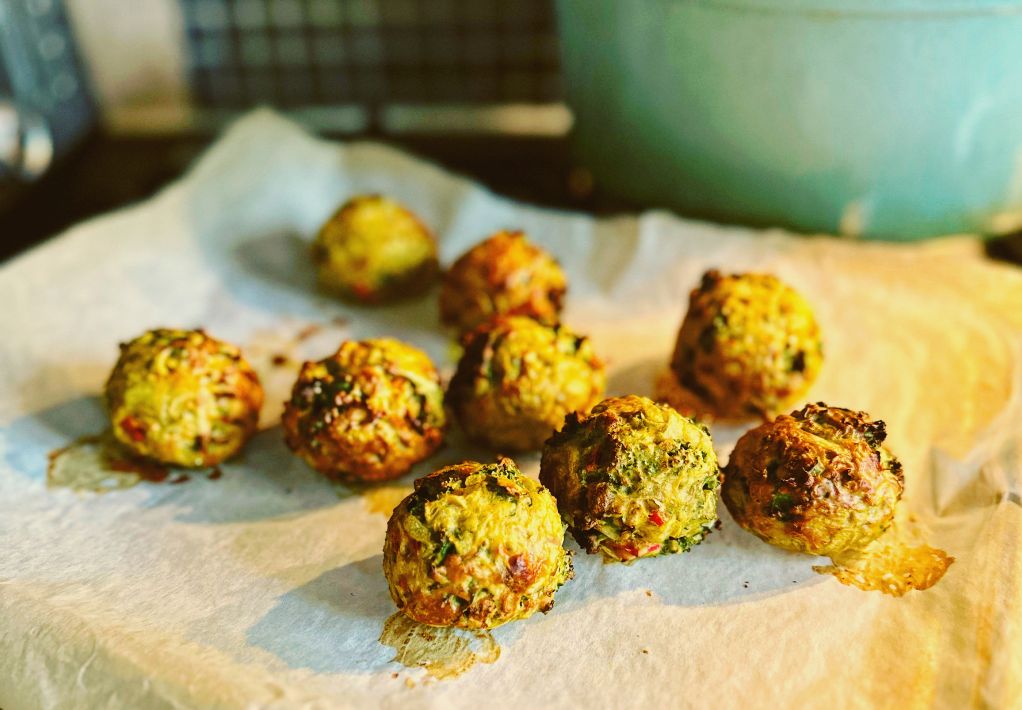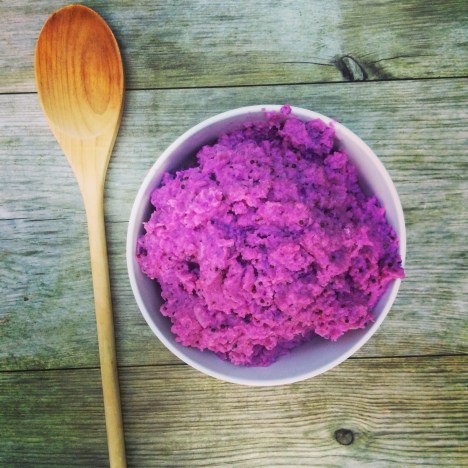‘Living seasonally’ has become a popular topic in the wellness world over the last few years, as many of us look back to the old ways of enjoying life in the hope of living at a slower and more relaxed pace. Indeed, to balance out our modern technology-infused and over-scheduled lives, we need something to help our mind and body feel calm and connected to nature, and living seasonally can help us do just that. One simple yet incredibly effective way to do this is to start eating seasonally – below you’ll find five Winter recipes to help you do just that.
Why seasonal living is important
Humans have been living seasonally since the very beginning, and it’s only really since we were able to live in comfortable homes, turn on electric lights, and import exotic foods that we moved away from what is inherently our natural state of being. Recent research is now showing that the more disconnected from nature we are, the more unhappy and unbalanced we feel. This is especially true with children, of whom more and more are experiencing Nature Deficit Disorder – a term coined by author and journalist Richard Louv. Nature Deficit Disorder is a recognised condition, and is known as a contributor to obesity, depression, ADHD, behavioural problems and lowered cognitive ability. Living seasonally can help us and our children reconnect with nature, as it requires looking to the outdoors and engaging with it on a regular basis, and could therefore be the answer to the emotional and mental issues many of us face today.
Living seasonally can help us reconnect with nature, as it requires looking to the outdoors and engaging with it on a regular basis, and could therefore be the answer to the emotional and mental issues many of us face today.
Benefits of seasonal eating
As you may have read in the other Seasonal Eating blogs, eating foods in-season can help enhance the immune system, improve digestive health, prevent seasonal illnesses, as well as giving us the exact nutrients we need at the exact right time. Isn’t nature clever? In the following Winter recipes, you’ll find foods packed with nutrients to bolster your immune system, as well as specific spices designed to warm you up on the coldest days.
Autumn to Winter
Through the year, we emerged into Springtime with plenty of detoxifying greens, leapt through Summer with fruits and cooling foods galore; wound down in Autumn with grounding root veg and hearty harvest stews, and now we find ourselves in Winter, the season when nothing much grows, but there are plenty of opportunities to gather together and feast. Traditionally Winter would have been the season of enjoying foods we’d stored and nurtured throughout the year – jars of pickled goods, apples and pears kept in a cool pantry, preserves and chutneys, as well as hardy veg we would have been able to harvest now.
The Yin & Yang of the year
Each season holds a very different type of energy, as you may have read in the Tune Into Spring, Tune Into Summer, Tune into Autumn or Tune Into Winter articles. Whilst the bright, hot days of Summer are conducive to exploring, socialising and eating lighter foods, Winter is all about turning inward, spending time with close loved ones, staying warm and nourishing ourselves with comfort foods. Sumer is very much about expressing our dynamic ‘yang’ energy, whilst Winter guides us to tune into the depths of Yin.
Below, you’ll discover the foods in season in Winter, the benefits they give us, plus five seasonal Winter recipes. If you live in the Southern Hemisphere, you may like to enjoy the five cooling Summer recipes in our Summer edition of the Eating Seasonally articles here.
Winter nutrients
It’s been a busy year, right? And your body is asking you to slow down, relax and recover. The thing is, with a full-on festive season and a brand new year to think about, Winter can actually become a busy time. If we were to live completely seasonally, new year wouldn’t happen on January 1st in the middle of dark and cold Winter. Instead, it would happen at the beginning of Spring, when nature comes back to life. This is why making a new year’s resolution connected to food (such as giving up chocolate, cutting out sugar or committing to a juice cleanse) can seem so challenging… our bodies just don’t want to change at this time of year! Instead, they need nurturing, care, rest and good quality nutrients, so that when Spring (aka Nature’s New Year) does arrive, we feel able to make bold changes and experiment with different forms of cleansing or detoxing.
The nutrients available in Winter are very much about feeding the immune system, to protect us from potential coughs and colds, and to help us recover stores of nutrients like vitamin C and magnesium, which can easily become depleted if we’ve been stressed or overly busy. Take a look at the foods below to discover what’s in season.
What’s in season in Winter?
Slow-growing foods full of vitamins help keep the immune system going, whilst also being suitable for storing over Winter. Our ancestors would have made preserves and pickles from foods in other seasons, and paired them with the foods in season right now to make a delicious meal. Winter foods are grounding and it just so happens that many of them grow close to the ground too. Try: Carrots, brussels sprouts, apples, cabbage, cauliflower, kale, leeks, parsnips, potatoes, swede, purple sprouting broccoli, brazil nuts, cashews, dates, cranberries, sweet chestnuts. As you can see, there’s less abundance in Winter, so it’s all about being creative with your ingredients.
5 Winter recipes
1. Roots & Greens Pakoras

These simple, bite-size balls of deliciousness are packed with nutrients. Pakoras are traditionally fried in lots of oil, but this version is baked and so much healthier. You can serve them as a side dish to a warming curry or dal, or save them to snack on through the week. Any leftovers will work well in packed lunches too.
INGREDIENTS
Makes roughly 10-12 pakoras
- 2 medium potatoes, grated
- 1 large handful kale
- 3 tbsp chickpea flour
- 1/2 tsp ground coriander
- 1/4 tsp ground cumin
- 1/4 tsp fennel seeds
- 1/2 tsp turmeric
- Generous pinch of salt & pepper
- 2tsp water
METHOD
- Pre heat the oven to 200C
- Add all ingredients to a large bowl & mix to combine
- Make sure your hands are slightly damp, then start to roll the mixture into balls (a little larger than a golf ball size)
- If the mixture seems too dry or too wet, add more flour or water accordingly
- Place on a baking tray in the oven & bake for 15-20 minutes or until golden brown
2. Plum & Cranberry Tarts

If you need a break from festive mince pies, these sweet and healthy treats are just the answer. Using easier-to-digest spelt flour and vitamin-rich berries, these plum and berry tarts make the most of late Autumn and Winter fruits. Feel free to swap the berries for what is available to you too.
INGREDIENTS
- 1 ½ cups spelt flour
- ½ cup coconut oil
- ¼ cup water
- 4 tbsp stevia or coconut sugar
- 5 ripe plums
- Handful of fresh or frozen cranberries
- 1 tsp cinnamon
METHOD
- Pre-heat the oven to 190C
- Add flour, coconut oil and 2 tbsp of the coconut sugar to a large bowl
- Use your fingertips to rub the ingredients into a breadcrumb-like texture
- Form a dough with the mixture and roll into a ball
- Pop in the fridge for 30 minutes
- Meanwhile, roast the plums and cranberries for 15 minutes, then blend them with cinnamon and the other 2 tbsp coconut sugar to create a jam-like consistency
- Turn the oven to 180C
- Roll out the dough from the fridge and cut into small circles
- Line a muffin tin with coconut oil, and place each circle into the tin, using the shape of each hole to mould the dough
- Bake for 15 minutes
- When they’re golden brown and firm, remove them from the oven and leave to cool
- Fill with the plum, cranberry and cinnamon mixture and top with more seasonal berries if you like.
3. Immune Boosting Broccoli Soup
This super green soup provides antioxidants, vitamin C, anti-viral compounds, and minerals to keep you well through the Winter months. Seasonal broccoli is a great addition to soup, as cruciferous vegetables help protect cells from damage, as well as benefitting eye and heart health too. This recipe makes a big batch, so treat family and friends to an immune-boosting meal, or save some for lunches though the week.
INGREDIENTS
(serves 8)
- 2 cloves garlic
- ½ chopped onion
- ½ chopped leek
- 60g frozen peas
- 2cm piece of fresh ginger, grated
- 180g head of broccoli
- 60g fresh spinach
- 400ml coconut milk
- 750ml vegetable stock
- 1/8 tsp cayenne
- 1 tsp salt
- Black pepper to taste
- 4 tbsp nutritional yeast
- Juice of ½ a lemon
METHOD
- Place all ingredients into a large pot, other than the nutritional yeast and lemon juice
- Bring to a boil, then cook over medium heat for 10-15 minutes
- Blend the soup to the consistency you like, then add nutritional yeast and lemon juice and stir
- Serve sprinkled with toasted sunflower seeds if you like
4. Purple Cauliflower Mash

Purple cauliflowers are a sight to behold. They stand out alongside their regular pale cousins, but you can use them in exactly the same way. Purple and white cauliflowers contain the same amount of protein, carbohydrates and vitamin C, however the purple variety contains an antioxidant known as anthocyanin, which has anti-cancer properties, can help increase longevity, improves cardiovascular health and may even help prevent dementia.
INGREDIENTS
- 1 medium to large head purple cauliflower
- 1 cube vegetable stock or 2 tsp bouillon powder. You’ll need to save 1-2 tbsp of the liquid stock to add to the mash.
- 2 heaped tsp yogurt (dairy or non-dairy will both work well)
- 2 heaped tsp brown mustard seeds
- 2 heaped tsp nutritional yeast
- ½ tsp dried rosemary
- ½ tsp dried thyme
- Good quality salt and pepper to taste.
METHOD
- Roughly chop the cauliflower into florets and place in a large pan
- Cover with water, add stock and simmer until tender (roughly 5-10 minutes)
- Drain the cauliflower, but reserve 2 tbsp of the liquid.
- Transfer the cauliflower to a food processor and add all other ingredients including 2 tbsp of the liquid stock you just cooked the cauliflower in.
- Pulse everything until it begins to look like ‘mash’. You may need to stop a few times and scrape down the sides to get the desired consistency, but it’s surprisingly quick to whizz up.
- Serve alongside your favourite protein and other seasonal veg.
5. Plant-Based Gingerbread Men

Easy to make and a great activity to get the kids involved with; these gingerbread men are nut-free, plant-based and high in fibre. Adding warming spices such as cinnamon and ginger to foods during Winter can help maintain healthy digestion, as well as being great for blood sugar and anti-viral too. This recipe uses spelt flour just like the plum and cranberry tarts, but feel free to swap it out for gluten free flour if you prefer.
INGREDIENTS
Makes roughly 6-8 depending upon cutter size
- ¾ cup spelt flour
- ¼ cup ground flax seed
- ¼ tsp baking powder
- ½ tsp bicarbonate of soda
- 2 tsp ground ginger
- 1 tsp ground cinnamon
- 5-6 tbsp coconut sugar or 3 tbsp stevia
- 3 tbsp coconut oil
- splash of almond milk
- Dark chocolate buttons
- If you want a more ‘classic’ gingerbread taste, add 2 tbsp blackstrap molasses
METHOD
- Sieve the spelt flour into a large mixing bowl
- Add the flax, baking powder, bicarb, ginger, cinnamon, sweetener of your choice and mix to combine
- Gently melt the coconut oil and add it to the dry mixture
- Use your hands to mix everything together, adding a splash of almond milk partway though (if the milk makes the mixture very watery, just add a little more flour)
- Mix until you’re able to form a ‘dough’ – the dough should not be too wet
- Place in the fridge and leave to cool for half an hour (can also be left overnight)
- When you’re ready to bake, preheat the oven to 180C, line a baking tray with baking paper and lightly grease with coconut oil
- Scatter some flour onto a work surface and roll the dough out to roughly 1/4 cm thick
- Use a cookie cutter to cut the dough into shapes, add the chocolate button eyes and transfer onto the baking tray (using a fish slice to transfer the shapes means they’ll hold their shape better)
- Bake on the bottom shelf of the oven for roughly 12 minutes or until fragrant, firmer and golden brown
- Remove from the oven and leave to cool
More Winter inspiration:
- Living seasonally: Tune into Winter
- Ayurvedic advice for a healthy Winter
- Yoga practice: Keep your body happy during Winter
Main image courtesy of Evelin Horvath via Unsplash

